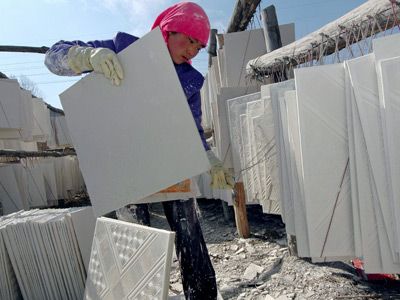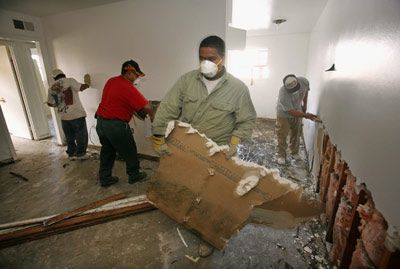Texturing a ceiling is a great way to dress up a room. Some patterns, like skip-troweling, involve nothing more than running a trowel or other tool over the partially stiff compound [source: Donovan]. Follow the steps below and you'll soon have a lovely textured ceiling.
- Repair the ceiling's plaster, making sure there are no cracks, holes, etc.
- Prime the ceiling before texturing. Texture compound applied to an unprimed ceiling dries very quickly, causing lap marks where wet compound is applied next to dry compound.
- Decide what compound to use. You can use a ready-to-use multi-purpose joint compound, a ready-mixed texture compound, or a powdered texture compound that you mix yourself. You may have to mix water into the ready-to-use compounds to attain the right consistency.
- Decide if you want to mix color into the compound. (Color can only be added to powder compounds.) Adding color at this stage eliminates painting the ceiling later on. Mix the coloring agent into the water.
- Mix up the compound of your choice using the mixer attachment on your drill or a mud masher. Let the mixture sit overnight. Mix it again to get out any lumps, adding more water as needed.
- Sand can be added at this point, to get the right texture and to get the look of old plaster. Sand is graded by mesh size, with higher numbers signifying finer sand. Usually 30 or 70 mesh sand (or some combination of the two) works well.
- Experiment with patterns on drywall scraps or cardboard. Use different tools, as well as different patterns. Almost any tool can be used, including paint rollers, paintbrushes, sponges and knives. Once you make a pattern you like, think about whether you can make it consistently on a ceiling.
- Apply the compound to the ceiling, texturing it as you go.
[source: Brown]
Advertisement
Note the proportions used when mixing the compound, so every batch has the same consistency.
Advertisement


